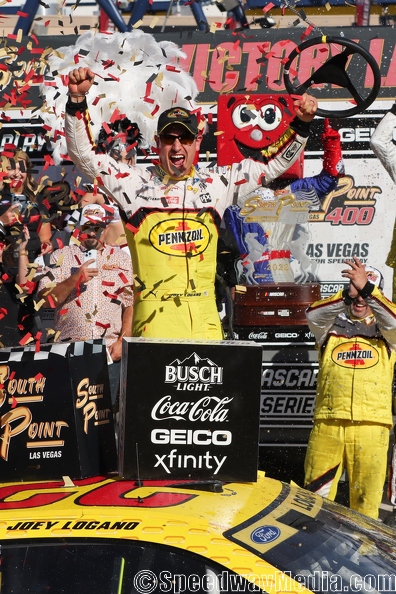With vehicles reaching speeds of 200 mph and colliding with one another as they compete for the position, NASCAR is among the most thrilling motorsports in the world. It is actually the automotive version of a true “fight to the finish“.
Since NASCAR initially commenced, which was in the late 1940s, there have been numerous modifications and adaptations, with a huge variety of types and models vying for the top spot. For some brutal racing action, coupes, sedans, and even trucks have made their way onto the ’oval’.
Did you know NASCAR was not always for conventional American (and, more lately, Japanese) car brands? For the last several decades, NASCAR has typically been the home of thunderous V8 muscle cars with huge, square bodywork and minimum aerodynamics.
The chassis used by NASCAR prior to switching to tube chassis and plastic bodywork was ’stock’ cars in their essence that had been adapted for oval racing. This meant that virtually anyone who wanted to participate in a race could do so with a car, including any manufacturer with a high-performance vehicle. Naturally, this led to a number of various manufacturers attempting their hand at racing, which now would not be appropriate for the brand at all.
Let’s rank them in order according to the periods in which they appeared on the track and wonder what kind of odds would be assigned to each and every one of these cars if there were online bookies (and legal bookies, in general) from bookmaker-expert.com/bookmakers/sports-betting/nascar/ at that time…
Porsche 356
Porsche enjoys competing. In actuality, the company actually began as a producer of race bodywork and Volkswagen-specific components. Therefore, it should not be surprising that it has experimented with every type of motorsport available, including a NASCAR event in 1951.
Edgar Otto Sr. bought and then pitted cars like Porsches, Aston Martins, and Jaguars against their American rivals in what would have been some of the first post-war international vs American auto races. A Porsche 356 was reportedly on the starting grid for one race that was conducted at Langhorne Speedway in Pennsylvania.
Although little is known about the vehicle, the driver, or how it performed during the race, it is safe to say that it would have been an amazing sight to witness a small, effervescent sports car coexist alongside Mercury and Ford.
Volkswagen Beetle
Want to see more instances of NASCAR events that prompted participation from foreign automakers? Dick Hagey entered a Volkswagen Beetle in the July 1953 event at Langhorne Speedway. The Love Bug, in which Herbie, ironically, wears the number 53, according to the year of that race, may have had some impact on this scenario, but it was not one from it.
Despite having only 30 horsepower on its back bumper, the Beetle somehow placed 18th out of 35 cars on the grid. It is still the only Beetle to have participated in the Sprint Cup race, formerly known as the NASCAR Grand National race.
Jaguar XK120
On June 13, 1954, the International 100 NASCAR event was held at the Linden airport track and featured a number of foreign vehicles competing against American machinery. Since the circuit was a road circuit, lighter and more agile cars were far more likely to win, but Al Keller’s Jaguar XK120 was the clear favorite.
A very unusual and speedy automobile at the time, the XK120 had an aluminum body and an ash frame. The Keller would also have his work designed and built for him considering that 21 of the 43 cars in this race were produced abroad. Keller ultimately won the race by nearly a full lap and collected $5,020 in prize money. Keller continues to be the only guy to have driven a British car to victory in a NASCAR race.
1957 Chevy Bel-Air Convertible
NASCAR had a dedicated convertible car division in the middle to late 1950s. Since 20 of the 59 cars entered for the 1959 Daytona 500 had no roofs, there was even a special practice session just for drop-tops. Yes, this ratio was the impetus behind the creation of the initial Twin 125s race, which is being held at Daytona today and known as the “Budweiser Duels“.
Almost each of the convertibles utilized in this race could have been picked for their oddity, but Joe Lee Johnson’s 1957 Chevrolet Bel-Air is being singled out because it competes with every piece of chrome still in place. We suppose he did not anticipate wrecking it anytime soon.
Citroën ID-19
A simpler variant of the DS, the Citroën ID nevertheless had a front-wheel drive 70-horsepower four-cylinder engine. Citroën took ID and DS automobiles to just about every track event it could, such as the Monte Carlo Rally and, yes, NASCAR, despite the fact that the car does not have the best sports history.
On June 1, 1958, at Riverside, two Citroën ID-19s competed in the Crown America 500. They did not just compete; they also took first and second place in their category, which must have been the front-wheel-drive class, finishing 18th and 19th overall. Having their hydropneumatic suspension compression at every bend, they must have been quite the sight. Bill Jones drove the No. 100 car and Ralph Roberts drove the No. 101 car.









